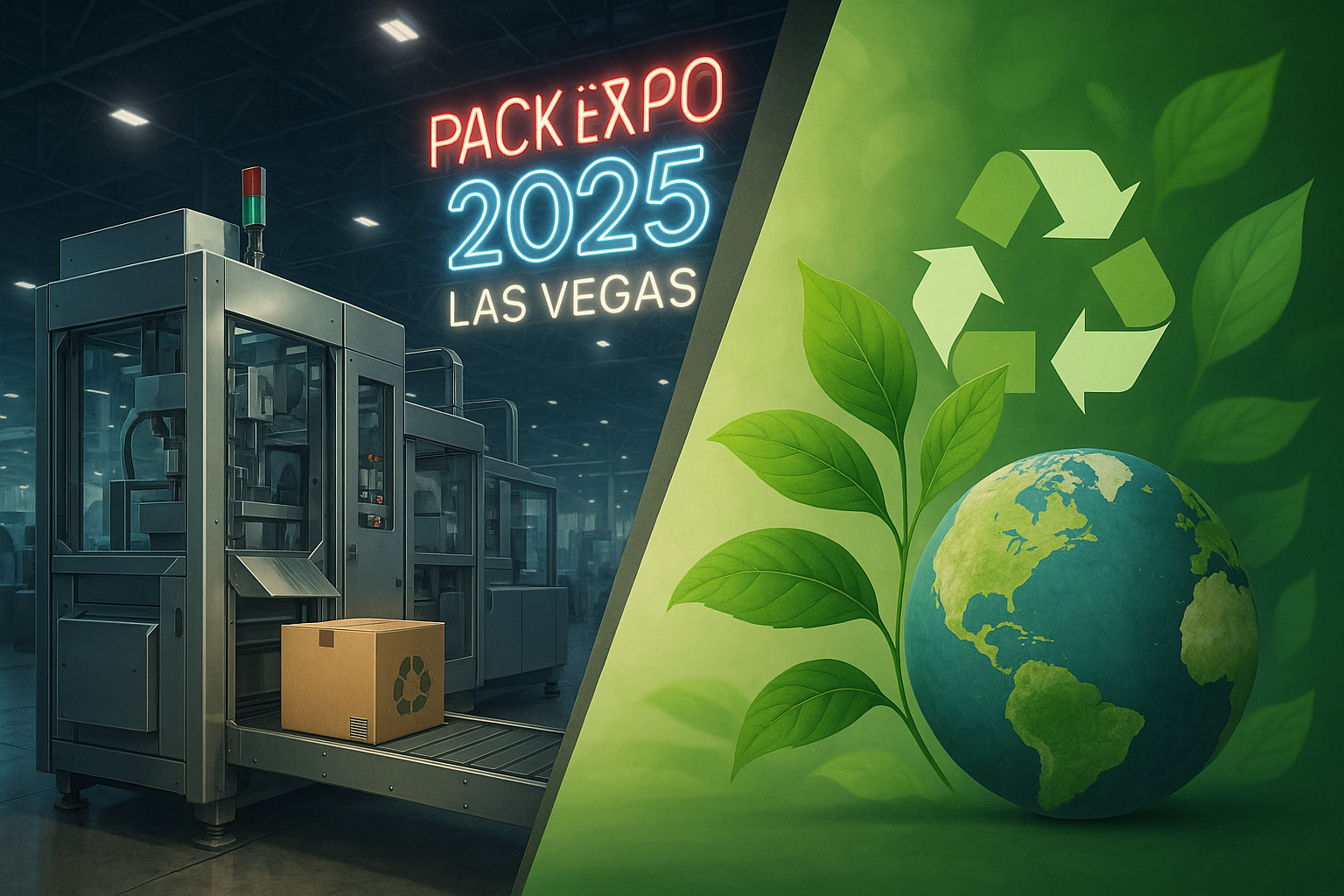Last week, as the Burkasan team, we visited the PACK EXPO 2025 trade show in Las Vegas, which clearly demonstrated that the packaging industry is currently at a crossroads. The picture that greeted us as soon as we stepped into the halls was quite clear: Machine speed, automation solutions, and flexibility-focused systems were prominently featured at nearly every booth. Labor shortages and cost pressures confirmed that manufacturers still view operational efficiency as their top priority. Demand was extremely high for solutions that could be rapidly deployed and easily reconfigured. Last week, the Burkasan team visited the PACK EXPO 2025 trade show in Las Vegas, which clearly demonstrated that the packaging industry is currently at a crossroads. The picture that greeted us as soon as we stepped into the halls was quite clear: Machine speed, automation solutions, and flexibility-focused systems were front and center at nearly every booth. Labor shortages and cost pressures confirmed that manufacturers still see operational efficiency as their top priority. Demand for solutions that can be quickly deployed and easily reconfigured was extremely high.
However, the same fair also revealed that the packaging industry is not solely engaged in a race focused on efficiency. The sustainability agenda was the scene of a sharp divergence, particularly regarding how it is addressed in different regions. The question “Speed or environment?” was not merely a theoretical debate; it was evident in concrete examples throughout the fair. Our conversations with participants painted a clear picture: Customers still demand speed and cost advantages, but sustainability expectations are also on the rise. Caught between these two demands, the American market presented a structure where two different sets of rules were being played on the same field.
America’s approach is cautious and fragmented. In particular, the rollback of sustainability policies at the federal level highlights a lack of long-term vision on a national scale. In contrast, session titles that stood out in the exhibition program, such as “Regulations Are Here — Is Your Packaging Ready?”, strongly emphasized that legal compliance is no longer a goal but a starting point. Although sustainability has not yet been adopted as a central policy in the US, industry representatives know it is inevitable and are trying to prepare for it in the field.
Another important aspect that stood out at the fair was that innovation had gone far beyond this discussion. The industry is moving not only to comply with regulations but also to produce solutions that truly create value. For example, Comprex North America’s Floco Process technology, which won an award in the Sustainability category, can reduce water usage in cleaning processes by up to 90% with its pulsed air system. This provides not only environmental benefits but also operational cost advantages. Senzani U-Seal, which was awarded in the Food and Beverage category, reduces emissions and simplifies mechanical processes by producing fully recyclable cardboard packaging without using heat. Such examples demonstrate that it is possible to produce solutions that combine both sustainability and efficiency, overcoming the “sustainability or efficiency?” dilemma. True innovation lies in taking action before regulations are imposed.
Nevertheless, the real strategic challenge in the United States lies elsewhere: the gap between local market dynamics and global sustainability expectations. While there is a retreat at the federal level, there is the opposite movement at the state level. This turns the country into two separate systems progressing at different speeds rather than a single sustainability approach.
With President Donald Trump taking office in 2025, the sustainability and climate agenda seriously regressed at the federal level. Policy initiatives to reduce single-use plastics were rolled back under Presidential Executive Order 14208, and federal agencies were prohibited from purchasing paper straws. Trump’s characterization of the climate crisis as “the greatest scam ever perpetrated on the world” and his announcement that the US would withdraw from the Paris Climate Agreement created a broader wave of deregulation that indirectly affected the packaging sector. The “One Big Beautiful Bill Act,” which came into effect in July 2025, eliminated penalties for non-compliance with federal CAFE standards. Billions of dollars allocated to solar energy projects were either canceled or attempted to be withdrawn. This scenario created a highly uncertain, even hostile environment for sustainability investments at the national level.
This is precisely why the other side of the stage becomes even more compelling: the states. At a point where the federal structure is stepping back, pioneering states like New York and Washington are taking aggressive steps toward sustainability, creating a de facto national standard. New York State’s Packaging Reduction and Recycling Infrastructure Act (S1464), which mandates EPR and sets a target of reducing plastic packaging waste by 30% within 12 years, is one of the most striking examples of this. Washington State has similarly established a framework requiring producers to finance and manage recycling systems. This means that even without a national law, the strictest rule effectively governs the entire market. However, the failure of more than 30 packaging-related bills to pass legislatures in states such as Arizona, Florida, and Texas in 2025 highlights the inconsistency of this fragmented approach.
The sole reason for America’s lag in sustainability is not policy; economic realities are also decisive. The plastic packaging recycling rate, which was 8.7 percent in 2018, has now fallen to 5 percent. This rate makes the US the worst performer among developed countries. The main reason for this is that landfill and incineration costs in North America are much lower than in Europe. In other words, disposing of waste is often cheaper than recycling it. This makes it difficult for recycled raw materials (PCR) to compete on price with virgin materials. The use of PCR is progressing slowly due to cost pressures and quality inconsistencies; many companies have been forced to postpone their commitments by five years. While high performance is achieved in some categories such as paper/cardboard (44.4%), the plastic sector is still struggling to establish a sustainable model.
This entire picture shows that America’s sustainability journey is not linear, but multi-layered. Federal-level retreat, state-level progress; economic obstacles, technological opportunities; pressure for efficiency, environmental responsibility… All are on stage at the same time. PACK EXPO showed us this complex picture in all its reality: America may be moving slowly on sustainability, but beneath this stagnation lies serious potential for transformation. Innovation, in particular, is making headway in the field, independent of legislation. It is not waiting for sustainability, but designing it that will pay off.
As a result, the US market is not shaped solely by federal policies; state governments, economic dynamics, and industrial innovation are collectively establishing a new equilibrium. Where this equilibrium will evolve is largely tied to global developments. Because on the other side of the world, the European Union has begun rewriting the rules of the game with a very different strategy.
So, how is Europe responding to this challenge? What will the circular economy revolution, starting with PPWR, change? How will mandatory recycled content targets and reuse systems transform the sector? How are Asian markets contributing to this transformation, particularly with digital traceability?
In my next article, we will address the second half of the global picture and seek answers to these questions. Because sustainability is no longer just a local agenda; it is a global competitive standard that is reshaping our business models.

